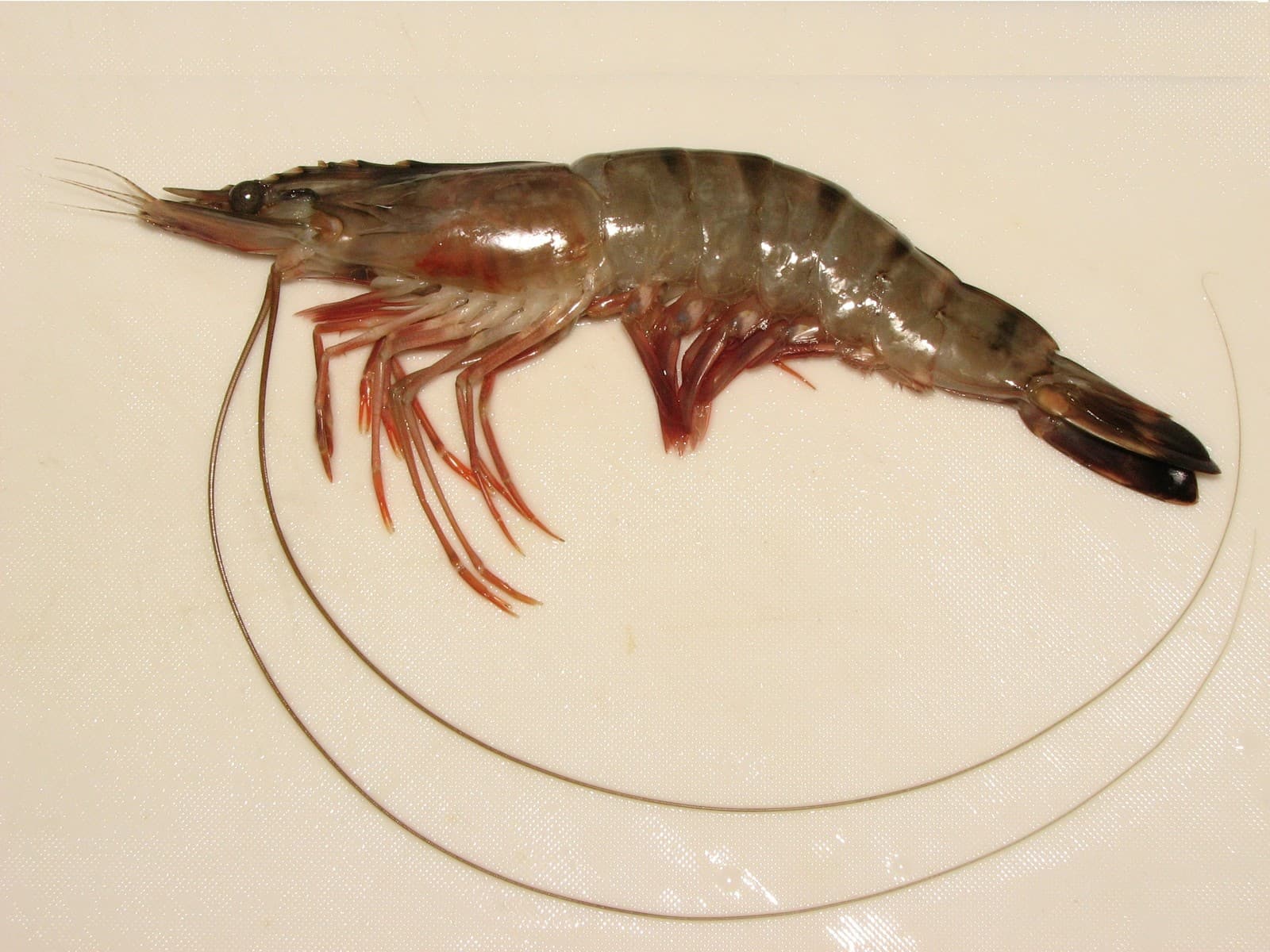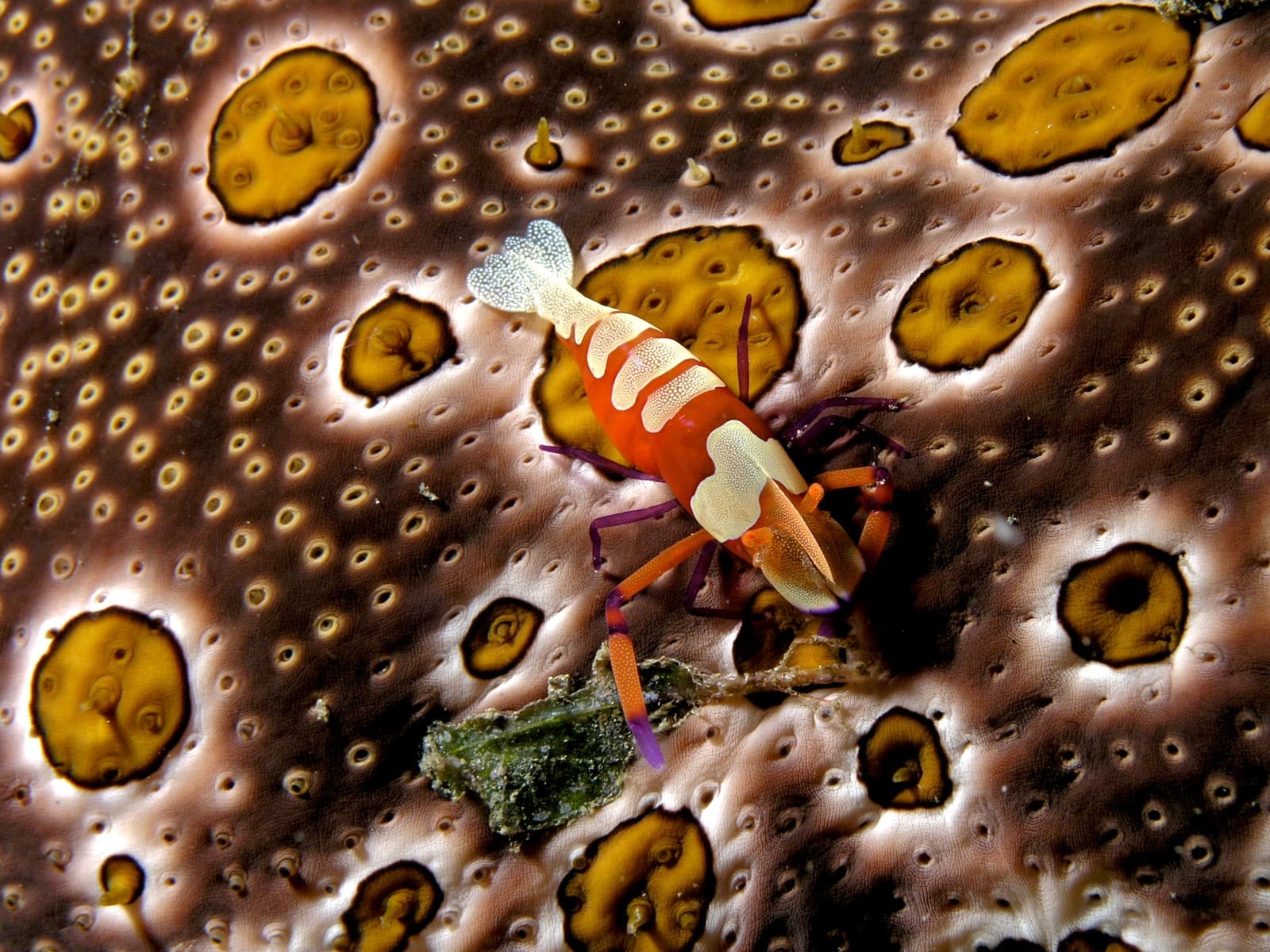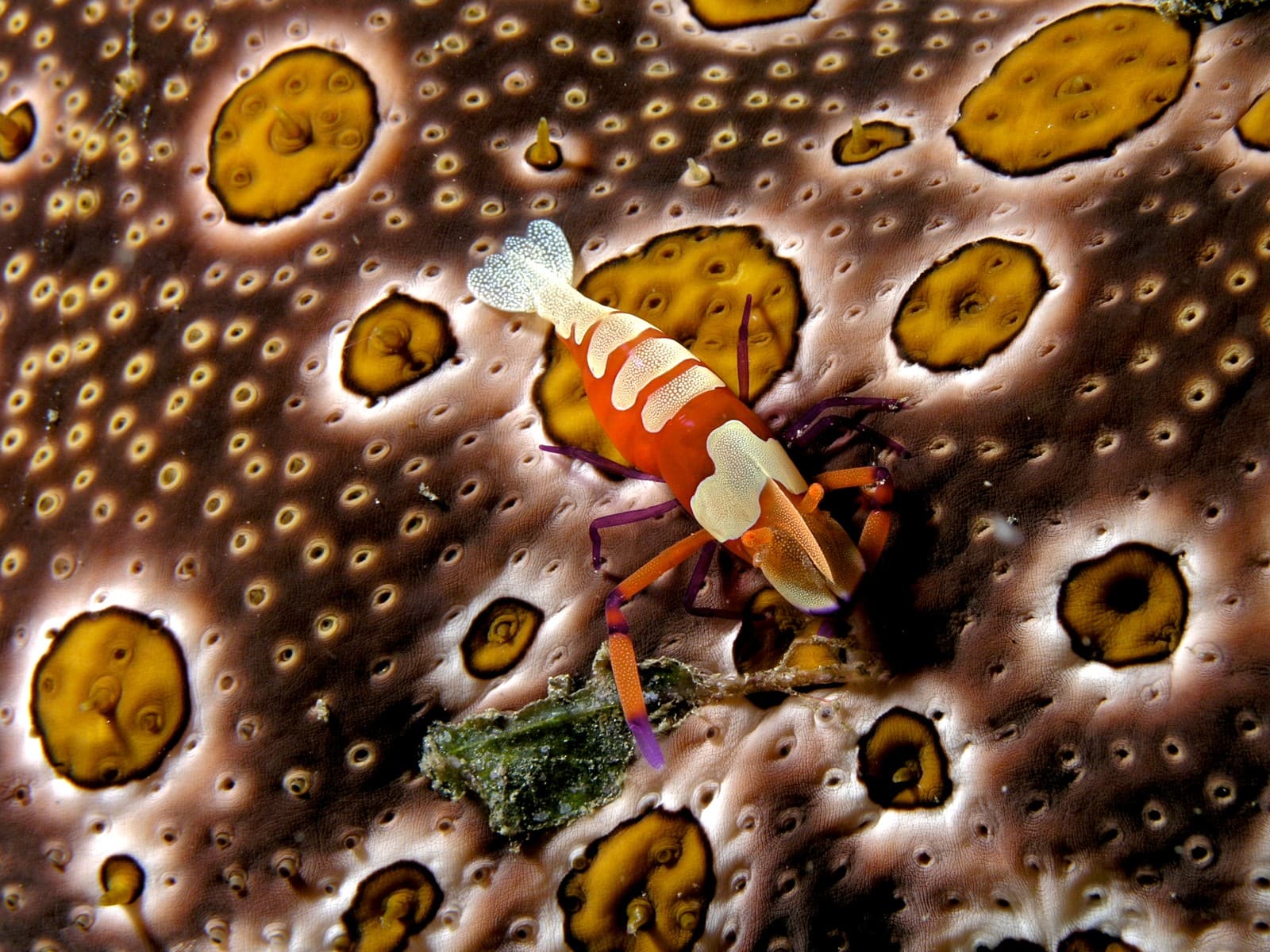Prawn vs Shrimp: A Complete Comparison
Despite their similar appearance, prawns and shrimp are distinct crustaceans with several key anatomical differences. The most notable distinction lies in their gill structure – prawns have branching gills, while shrimp possess plate-like gills. Prawns also tend to be larger, with some species reaching 13 inches (33 cm) in length, compared to most shrimp species averaging 1.5-3 inches (4-7.6 cm).
For consumers and culinary enthusiasts, the prawn vs shrimp debate often centers on taste and texture. Prawns generally offer sweeter meat with a firmer texture, while shrimp typically provide a more delicate flavor profile with a slightly softer consistency. However, these differences can be subtle and vary significantly between species.

© self / CC BY-SA 3.0
Tiger prawns showcase the characteristic branching gill structure and larger size typical of prawns, with their distinctive striped pattern making them easily identifiable among commercial species.

© Nhobgood Nick Hobgood / CC BY-SA 3.0
The Imperial Partner Shrimp demonstrates the classic plate-like gill structure and smaller size characteristic of true shrimp species, along with their remarkable ability to form symbiotic relationships with coral hosts.
Key Anatomical Differences
| Feature | Prawn | Shrimp |
|---|---|---|
| Gill Structure | Branching (dendritic) | Plate-like (lamellar) |
| Body Segments | Overlap differently - second segment overlaps first and third | Overlap in sequence - first overlaps second, second overlaps third |
| Size Range | 3-13 inches (7.6-33 cm) | 1.5-3 inches (4-7.6 cm) |
| Claw Structure | First three pairs of legs have claws | First two pairs of legs have claws |
| Shell Hardness | Generally thicker and harder | Usually thinner and more delicate |
Habitat and Distribution
Prawns primarily inhabit freshwater environments and estuaries, though some species can be found in marine waters. They typically prefer tropical and subtropical regions, with significant populations in Asia and South America. In contrast, shrimp are predominantly marine creatures, found in both shallow coastal waters and deep oceans worldwide, with some species adapted to cold waters.
Behavioral Differences
While both prawns and shrimp are decapod crustaceans, their behavioral patterns differ significantly. Prawns tend to be solitary or live in loose groups, while many shrimp species form dense schools or establish symbiotic relationships with other marine organisms. Shrimp are also generally more active swimmers, using their well-developed pleopods (swimming legs) for rapid movement through the water column.
Commercial and Culinary Significance
From a culinary perspective, the terms “prawn” and “shrimp” are often used interchangeably in different parts of the world. However, there are notable differences in their commercial value and preparation methods:
- Prawns typically command higher market prices due to their larger size
- Shrimp are the more commonly farmed species, accounting for 55% of global crustacean aquaculture
- Both contain similar nutritional profiles, with approximately 20-25g of protein per 100g serving
Conservation Status and Environmental Impact
Both prawns and shrimp face significant conservation challenges, primarily due to:
- Overfishing in wild populations
- Habitat destruction, particularly in mangrove areas
- Environmental impacts of aquaculture operations
- Bycatch issues in commercial fishing
Sustainable farming practices and careful management of wild stocks are crucial for maintaining healthy populations of both species.
Who Would Win in a Direct Comparison?
In terms of physical capabilities, prawns generally have advantages in:
- Size and strength
- Shell durability
- Claw power
However, shrimp excel in:
- Swimming speed
- Maneuverability
- Adaptability to different environments
While prawns might dominate in direct physical confrontations, shrimp’s superior mobility and schooling behavior provide better survival advantages in natural settings.
The real victory in the prawn vs shrimp comparison lies in their distinct evolutionary adaptations to different ecological niches, rather than any direct competition between the species.











